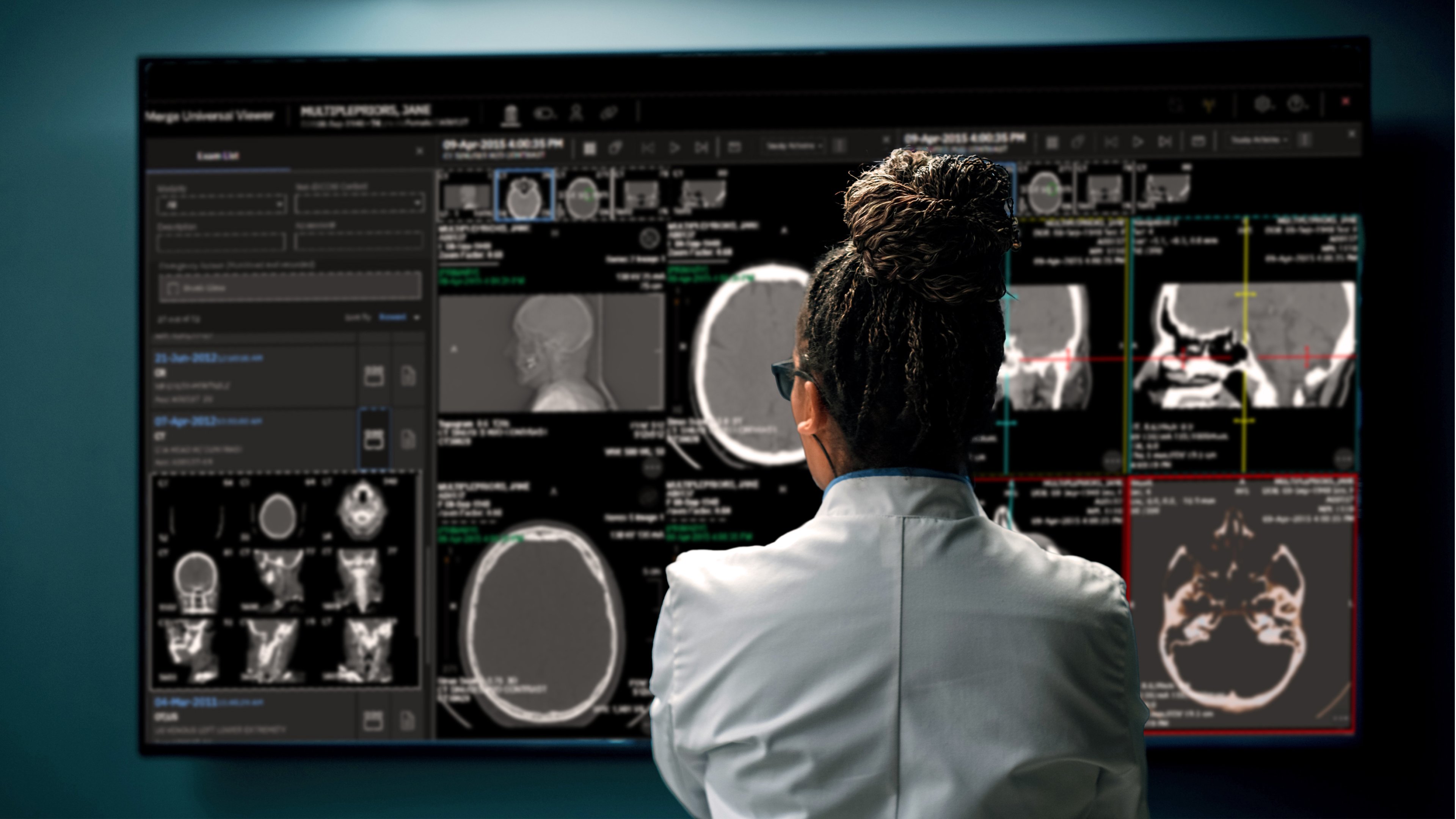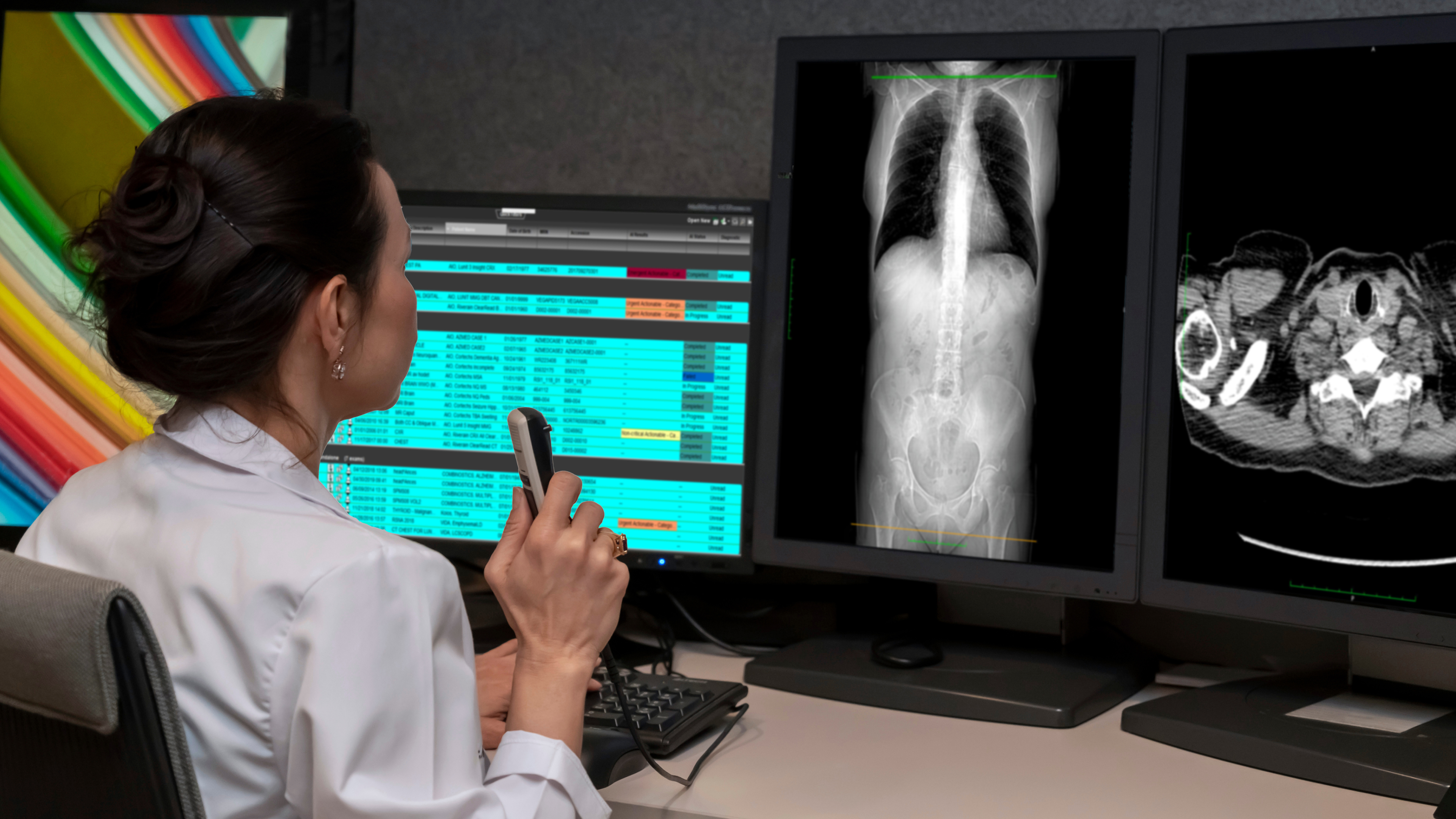Fight clinician burnout with radiology workflow orchestration
Discover how workflow orchestration reduces radiologist burnout by streamlining medical imaging workflows, automating case distribution, and improving work-life balance.

The story at a glance
- Radiologist burnout has reached crisis levels. With 71% of radiologists reporting symptoms of burnout and turnover rates climbing annually, healthcare organizations face mounting pressure to create sustainable working environments for providers while maintaining quality patient care.
- The root cause isn’t just increased volume—it’s the daily friction created by fragmented medical imaging workflows.
- Radiologists spend precious time navigating between multiple systems, managing unbalanced caseloads, and dealing with inefficient health system processes that should support, not hinder, their clinical expertise.
- Workflow orchestration offers a proven path forward, with advancements to transform and streamline chaotic reading environments into intelligent systems that prioritize both efficiency and physician well-being.
The high cost of burnout in modern radiology
Burnout in radiology extends far beyond individual dissatisfaction. Healthcare organizations face significant financial and operational consequences when radiologists experience chronic workplace stress.
The American College of Radiology reports that burnout-related turnover costs organizations an average of $500,000 per departing radiologist when factoring in recruitment, training, and productivity losses. More concerning, burned-out radiologists show decreased diagnostic accuracy and slower reporting times, directly impacting patient care quality.
Staff shortages compound these challenges. With imaging volume growing 3-5% annually while radiologist supply remains relatively static, remaining staff face increasingly unsustainable workloads. This creates a cycle where burnout leads to turnover, which increases pressure on remaining team members.
How disjointed radiology workflows fuel daily friction
Traditional medical imaging workflows and healthcare workflow automation (for example, offered in EHR systems) force radiologists into inefficient patterns that drain energy and focus. Consider this typical scenario: a radiologist arrives for their shift and must check four separate worklists across different systems—PACS for routine studies, a cardiology system for echo reports, emergency department priorities, and subspecialty queues.
Each system requires separate logins, different interfaces, and manual prioritization decisions — and sometimes different computers. The radiologist spends significant time simply determining what to read next, often interrupted by calls from providers across the health system asking about specific cases scattered across multiple queues. At times, they must physically change seats to get in front of a specific system to complete studies.
This fragmentation creates several stress points:
- Context switching fatigue: Moving between systems and workstations disrupts concentration and increases fatigue and burnout.
- Decision paralysis: With hundreds of cases appearing across multiple lists in real-time, determining the priorities becomes overwhelming.
- Inequitable distribution: Manual case selection can lead to workload imbalances and team friction.
- Lost productivity: Administrative tasks consume time that should be spent on diagnosis and reporting
These workflow challenges directly contribute to the daily stress that accumulates into burnout over time.
How workflow automation reduces stress
Medical imaging automation addresses burnout by eliminating the administrative friction that consumes radiologists’ mental energy. Rather than forcing physicians to manage complex logistics, these intelligent systems handle the routine decisions automatically.
Workflow orchestration platforms consolidate multiple worklists into a single, unified view. Instead of checking different systems, radiologists access one interface that aggregates studies from across the enterprise. This simple consolidation can save time on every shift while reducing the frustrations of constant system switching.
Automated case prioritization removes another source of daily stress. Rather than making dozens of micro-decisions about which case to read next, radiologists can trust that urgent studies are surfaced automatically based on clinical protocols and AI-driven insights.
From multiple worklists to one intelligent hub
The transition from fragmented worklists to unified workflow orchestration represents a fundamental shift in how radiologists interact with their caseloads. Unlike traditional healthcare workflow automation approaches, modern radiology workflow management systems create a single source of truth for providers that spans the entire imaging enterprise.
This intelligent worklist aggregates studies from PACS, RIS, cardiology systems, and artificial intelligence applications into one streamlined interface. Radiologists see comprehensive case information — patient history, prior studies, clinical context, and AI insights — without needing to navigate between systems.
The unified approach delivers immediate stress reduction. Radiologists report feeling more in control of their workday when they can see their entire caseload at once, in real-time, with clear priority indicators and automated routing based on subspecialty expertise and availability.
Automating routine case routing and prioritization
Intelligent case distribution eliminates much of the manual coordination that creates daily friction in radiology departments. Workflow orchestrators use configurable business rules combined with machine learning to automatically route studies to appropriate readers based on subspecialty, workload, urgency, and availability.
For emergency cases, AI-powered triage can immediately flag critical findings like pulmonary embolism or stroke indicators, ensuring these studies reach subspecialists within minutes rather than hours. Routine cases are distributed automatically to balance workloads across the reading team.
This automation reduces interruptions that contribute to physician stress. Department coordinators no longer need to constantly reassign cases or field questions about study priorities. The system handles routine decisions in clinical workflows, allowing both radiologists and support staff to focus on higher-value activities and non-routine matters.
Eliminating workplace friction with equitable workload balancing
Unequal workload distribution and “cherry-picking” cases creates significant team tension and contributes to individual burnout. When radiologists have the option to select which cases to read, natural preferences emerge—some might avoid complex cases while others might seek cases that earn higher RVUs (relative value units) and lead to more pay. These kinds of distortions can lead to some team members taking on disproportionate workloads, which may lead to resentment among teams.
Smarter caseload management addresses this challenge. The best systems do this through AI-driven distribution algorithms that learn from historical patterns while enforcing equitable allocation. This approach considers factors like case complexity, reading time requirements, and individual radiologist capabilities to reduce administrative burden and create balanced caseload assignments.
Healthcare organizations using automated workload balancing report 34% more equitable case distribution and measurably improved team satisfaction. When radiologists trust that work is distributed fairly, it reduces interpersonal stress and creates more collaborative reading environments.
A new reality: More focus on patients, less on clicks
The ultimate goal of workflow orchestration is to return radiologists’ attention to clinical care rather than managing healthcare process tasks. By automating routine administrative tasks, these platforms free up mental bandwidth for what matters most: accurate diagnosis and quality patient care.
Radiologists using modern workflow orchestrators report spending 20-25% less time on non-clinical tasks throughout healthcare processes. These time savings translate directly to reduced stress and improved job satisfaction. When physicians can focus on interpreting images rather than managing queues, they enjoy greater professional fulfillment.
The improved physician experience also benefits patient safety through faster turnaround times and more thorough reporting. Less stressed radiologists provide more detailed clinical insights and maintain higher diagnostic accuracy even during busy periods.
Reclaim your focus on high-quality patient care
Addressing clinician burnout requires more than individual resilience — it demands systematic workflow improvements that streamline decision-making and eliminate unnecessary stress while supporting clinical excellence. Workflow orchestration platforms provide the foundation for sustainable radiology practices that prioritize both physician well-being and patient outcomes.
Organizations implementing workflow orchestration for their medical imaging workflows see measurable improvements in radiologist satisfaction, retention rates, clinical productivity, medical errors, and enhanced patient experience.
Ready to streamline your radiology department’s workflow and reduce burnout? Merge Imaging Suite solution for Workflow Orchestration provides robust capabilities to make that a reality:
- A vendor neutral archive
- A zero-footprint diagnostic viewer
- Next-level workspace with Merge Workflow Orchestrator
Merge Workflow Orchestrator consolidates fragmented systems into an intelligent, unified experience designed by radiologists, for radiologists. Discover how workflow orchestration can reduce burnout while improving clinical outcomes and patient satisfaction in your organization.
Related Articles

A clinician’s POV: Workflow orchestration can revolutionize imaging
Reduce radiology burnout & save patient care. Discover intelligent teleradiology...
By Raj Chopra | 6 min. read

Teleradiology 2.0: How intelligent design can save radiologists—and patient care
As imaging demand soars and radiologist shortages become more acute, smarter...
By Raj Chopra | 4 min. read

Workflow orchestration streamlines imaging workflows in radiology and beyond
Learn how workflow orchestration improves the physician experience, patient care...
By Linda Bagley | 6 min. read
Ready for a consultation?
Our team is ready to answer your questions. Let's make smarter health ecosystems, together.
